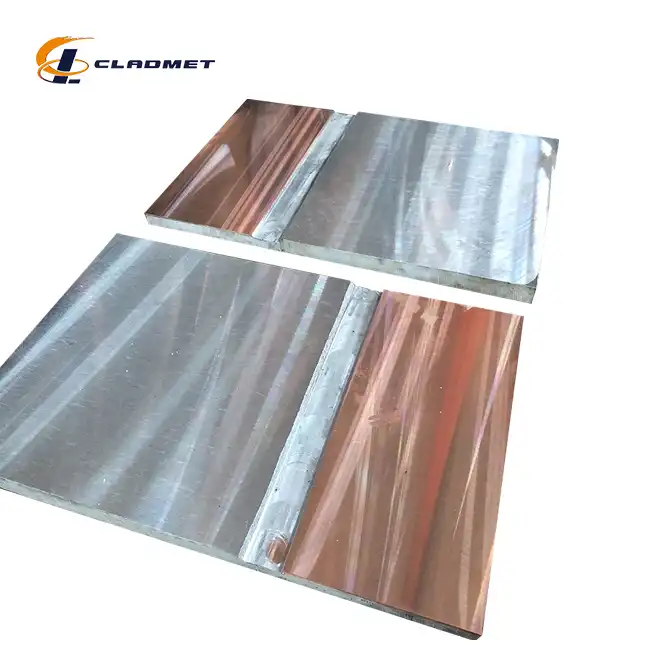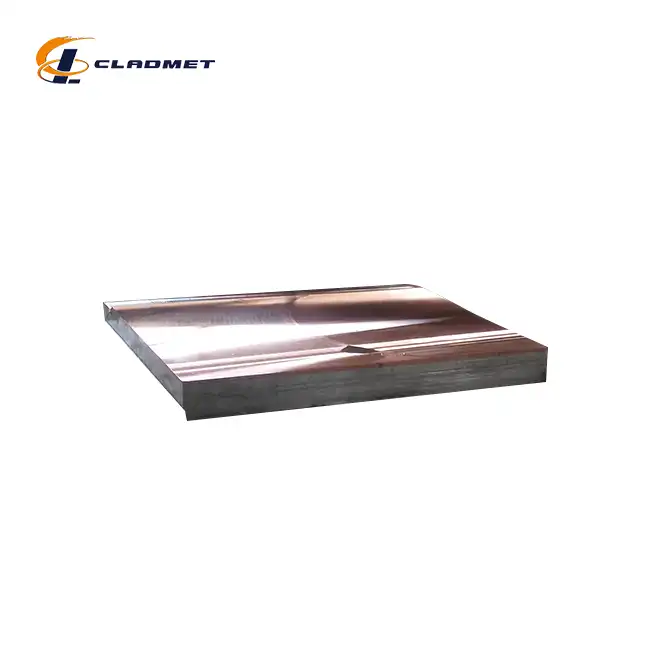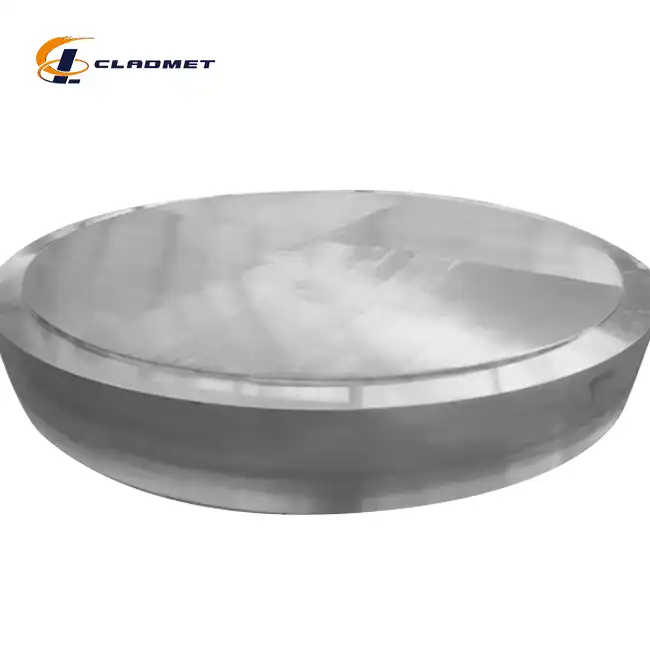Can thin titanium sheets be welded or joined?
 2025-06-17 09:09:32
View:389
2025-06-17 09:09:32
View:389The welding and joining of thin titanium sheets represents a critical fabrication process for many high-performance applications. Titanium's unique properties—lightweight strength, exceptional corrosion resistance, and high temperature stability—make it invaluable across industries, but these same qualities create specific challenges when joining thin sheets. Yes, thin titanium sheets can indeed be welded and joined using various specialized techniques that preserve the material's integrity while creating strong, durable bonds. The success of these joining methods depends on careful process control, proper preparation, and technique selection appropriate to the specific application and material thickness.
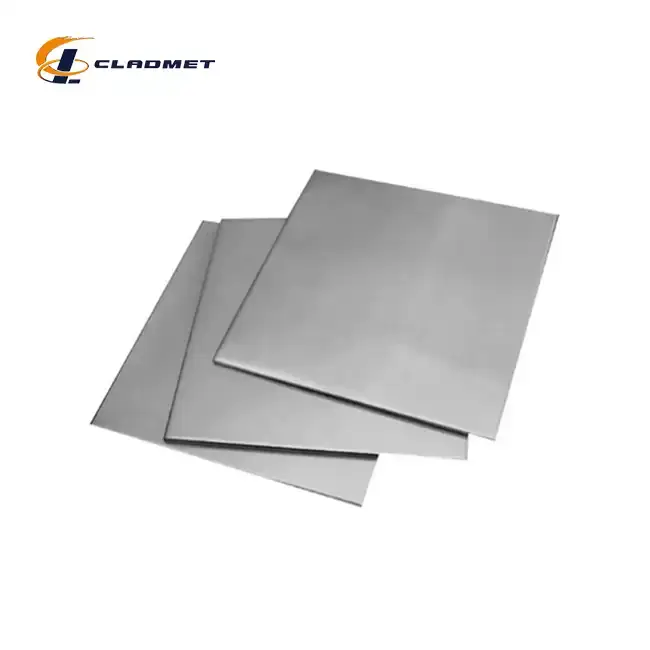
Welding Techniques for Thin Titanium Sheets
Tungsten Inert Gas (TIG) Welding
TIG welding represents one of the most widely adopted methods for joining thin titanium sheets due to its precision and exceptional control capabilities. When working with thin titanium sheet materials ranging from 0.2mm to 3mm thickness, TIG welding offers superior weld quality with minimal heat distortion. The process utilizes a non-consumable tungsten electrode while maintaining an inert gas shield (typically argon or helium) to prevent atmospheric contamination. This shielding is absolutely critical as titanium exhibits high reactivity with atmospheric gases at elevated temperatures, which can compromise both the mechanical properties and corrosion resistance of the material. For ultra-thin titanium sheets (0.2mm-1mm), specialized pulsed TIG welding techniques allow for precise heat input control, minimizing distortion while maintaining structural integrity. The production process employed by Baoji JL Clad Metals Materials Co., Ltd. ensures consistent material quality through precision cold rolling, which creates thin titanium sheets with uniform thickness and excellent surface finish—properties that significantly contribute to successful TIG welding outcomes. When properly executed on high-quality thin titanium sheets meeting ASTM B265 specifications, TIG welds exhibit excellent mechanical properties, often achieving joint efficiencies above 95% while maintaining the corrosion resistance inherent to the base material.
Laser Beam Welding
Laser beam welding has emerged as a premier joining method for thin titanium sheets, particularly for applications demanding precision, minimal heat-affected zones, and high production rates. This advanced welding technique is particularly valuable for thin titanium sheets in the 0.2mm-3mm range, as it provides exceptional control over heat input, resulting in minimal distortion and narrow, precisely positioned welds. The focused energy beam creates a keyhole effect that enables deep penetration with minimal overall heat input, which proves especially advantageous when working with thermally sensitive titanium alloys like Grade 5 (Ti-6Al-4V). Baoji JL Clad Metals Materials Co., Ltd. manufactures thin titanium sheets through rigorous production processes including vacuum annealing, which enhances material ductility and stress relief—properties that directly benefit laser welding applications. The company's commitment to quality control ensures consistent material composition and dimensional accuracy, factors that significantly impact laser welding success rates. For aerospace and medical applications where joint integrity is paramount, laser-welded thin titanium sheets deliver exceptional mechanical properties while maintaining the material's inherent corrosion resistance. The precision offered by laser welding makes it ideal for complex geometries and intricate assemblies where thin titanium sheet components must maintain dimensional stability while meeting stringent performance requirements.
Electron Beam Welding
Electron beam welding (EBW) represents a specialized joining technique particularly advantageous for thin titanium sheets requiring high precision and exceptional weld quality. Operating in a vacuum environment, EBW eliminates atmospheric contamination concerns that typically complicate titanium welding processes. This method creates exceptionally narrow welds with minimal heat-affected zones, making it ideal for thin titanium sheet applications where dimensional stability and mechanical properties must be preserved. The process excels at joining sheets from 0.2mm to 3mm thickness, producing welds with depth-to-width ratios impossible to achieve with conventional welding methods. The vacuum environment inherent to EBW perfectly complements the quality control measures implemented by Baoji JL Clad Metals Materials Co., Ltd. in their thin titanium sheet production. Their precision rolling and vacuum annealing processes create material with consistent grain structure and minimal internal stresses—properties that translate directly to superior electron beam weld quality. For applications in aerospace and chemical processing industries, EBW-joined thin titanium sheets deliver exceptional joint strength while maintaining material properties across the entire assembly. Though requiring specialized equipment, the long-term performance advantages make EBW an economically viable option for critical applications where weld integrity cannot be compromised. The strict adherence to ASTM B265 and JIS standards ensures that these thin titanium sheets maintain their performance characteristics throughout the entire joining process.
Mechanical Joining Methods for Thin Titanium Sheets
Riveting and Fastening Systems
Riveting and fastening represent reliable mechanical joining alternatives for thin titanium sheets when welding may not be appropriate due to thermal concerns or post-welding distortion limitations. These methods create secure, removable connections without altering the material's microstructure or mechanical properties through heat. For thin titanium sheets ranging from 0.2mm to 3mm, specialized fastening systems using titanium, aluminum, or stainless-steel components provide excellent joint strength while minimizing galvanic corrosion potential. The key advantage lies in the preservation of material properties, as no heat-affected zones are created during the joining process. Baoji JL Clad Metals Materials Co., Ltd. produces thin titanium sheets with exceptional dimensional stability and consistent mechanical properties, making them ideal candidates for precision fastening applications. Their rigorous quality inspection processes ensure uniform thickness and surface finish—critical factors for successful mechanical joining outcomes. In applications where disassembly may be required for maintenance or component replacement, riveted or fastened thin titanium sheet assemblies offer significant advantages over permanent welded connections. For thin titanium sheets used in marine environments or chemical processing equipment, mechanical fastening systems can incorporate specialized sealing elements to maintain leak-tight joints while preserving the material's inherent corrosion resistance properties across the entire assembly.
Adhesive Bonding
Adhesive bonding represents a versatile joining method for thin titanium sheets, particularly beneficial when heat-based processes must be avoided to preserve material properties and dimensional stability. This technique creates uniform stress distribution across joint surfaces, eliminating stress concentrations common with mechanical fasteners while maintaining the integrity of ultra-thin materials down to 0.2mm thickness. Modern structural adhesives specifically formulated for titanium substrates can achieve remarkable bond strengths while providing additional benefits including vibration damping, electrical insulation, and prevention of galvanic corrosion between dissimilar metals. The success of adhesive bonding directly correlates with substrate quality, an area where Baoji JL Clad Metals Materials Co., Ltd. excels through their precision manufacturing of thin titanium sheets with excellent surface finish and dimensional accuracy. Their vacuum annealing process creates materials with optimal surface energy characteristics for adhesive wetting and bond formation. For applications in aerospace, medical, and chemical processing industries, adhesively bonded thin titanium sheet assemblies offer excellent fatigue resistance and corrosion protection at the joint interface. The precision cutting capabilities available from JL Clad Metals ensure accurate edge preparation for complex joint geometries, while their quality control processes verify consistent material properties critical for predictable adhesive bond performance conforming to ASTM and JIS standards.
Diffusion Bonding
Diffusion bonding represents an advanced solid-state joining process ideal for thin titanium sheets where exceptional joint integrity and preservation of material properties are essential. This specialized technique creates molecular-level bonds through the application of pressure and elevated temperature—typically below the material's melting point—resulting in a continuous grain structure across the joint interface. For thin titanium sheets ranging from 0.2mm to 3mm, diffusion bonding creates seamless connections without filler materials, fusion zones, or heat-affected areas, essentially transforming separate components into a unified structure with properties matching the base material. The success of diffusion bonding relies heavily on material surface condition and composition consistency, areas where Baoji JL Clad Metals Materials Co., Ltd. excels through their advanced production techniques. Their precision rolling and vacuum annealing processes create thin titanium sheets with uniform microstructure and minimal surface contamination—prerequisites for successful diffusion bonding. For applications in aerospace, chemical processing, and medical implants, diffusion-bonded thin titanium sheet assemblies deliver unmatched performance under demanding service conditions, including high-temperature environments and exposure to corrosive media. While requiring specialized equipment and precise process control, the exceptional quality of diffusion bonds makes this technique invaluable for critical applications where joint performance cannot be compromised, particularly when working with high-grade titanium alloys meeting ASTM B265 and ASME SB265 specifications.
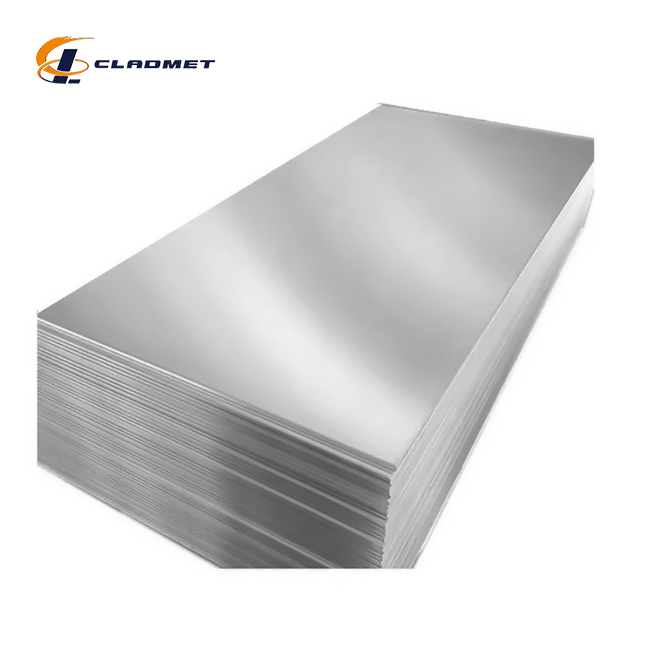
Special Considerations for Thin Titanium Sheet Joining
Surface Preparation and Cleanliness
Surface preparation represents perhaps the most critical factor determining successful joining outcomes for thin titanium sheets, regardless of the specific technique employed. Titanium's high reactivity with atmospheric elements necessitates meticulous cleaning and preparation protocols to ensure joint integrity and performance. For thin titanium sheets ranging from 0.2mm to 3mm thickness, proper surface preparation begins with mechanical cleaning to remove surface oxides and contaminants, followed by chemical cleaning with specialized solvents designed specifically for titanium substrates. This multi-step process eliminates potential hydrogen absorption sources that could lead to hydrogen embrittlement—a particular concern with thinner gauges where embrittlement effects can prove catastrophic. Baoji JL Clad Metals Materials Co., Ltd. implements rigorous quality control measures during their production of thin titanium sheets, including precision rolling and vacuum annealing, which creates materials with minimal surface contaminants and consistent composition. Their adherence to ASTM B265 and JIS standards ensures that these thin titanium sheet products maintain excellent surface characteristics conducive to successful joining. For applications in aerospace, medical implants, and chemical processing equipment, proper surface preparation directly impacts not only initial joint strength but also long-term performance under service conditions. The company's advanced production technology ensures consistent thickness and mechanical properties across the entire sheet, facilitating uniform cleaning processes and predictable joining outcomes regardless of whether welding, mechanical fastening, or adhesive bonding techniques are employed.
Post-Joining Heat Treatment
Post-joining heat treatment plays a vital role in optimizing the mechanical properties and service performance of joined thin titanium sheet assemblies. This critical process step relieves residual stresses introduced during welding or mechanical joining while simultaneously restoring material properties that may have been altered in heat-affected zones. For thin titanium sheets ranging from 0.2mm to 3mm, precisely controlled stress relief treatments can prevent distortion while enhancing fatigue resistance and dimensional stability. Additionally, proper heat treatment protocols minimize the risk of hydrogen embrittlement—a particular concern with welded thin titanium sheets due to potential hydrogen absorption during the joining process. Baoji JL Clad Metals Materials Co., Ltd. provides thin titanium sheets manufactured through advanced processes including vacuum annealing, which creates materials with optimal grain structure and mechanical properties for post-joining heat treatment. Their strict adherence to ASTM B265 and JIS standards ensures consistent material response to heat treatment protocols, resulting in predictable performance outcomes. For applications in aerospace, chemical processing, and medical implants, properly heat-treated thin titanium sheet assemblies deliver superior service life under demanding operating conditions. The company's commitment to quality control throughout the production process creates materials with minimal internal stresses and uniform composition—properties that significantly enhance the effectiveness of post-joining heat treatments while minimizing the risk of unexpected distortion or property variations across the joined assembly.
Joining Dissimilar Materials
Joining thin titanium sheets to dissimilar materials presents unique challenges requiring specialized techniques to overcome differences in thermal expansion coefficients, melting points, and chemical compatibility. This complex process demands careful material selection and process control to create durable joints while preventing galvanic corrosion and intermetallic compound formation. For thin titanium sheets in the 0.2mm-3mm range, successful dissimilar material joining often involves transition inserts or barrier layers to mitigate thermal stresses and metallurgical incompatibilities. These sophisticated approaches enable the integration of titanium's exceptional properties with complementary materials in multi-material assemblies for optimized performance and cost-effectiveness. Baoji JL Clad Metals Materials Co., Ltd. specializes in producing high-quality thin titanium sheets with consistent properties that facilitate predictable results in dissimilar material joining applications. Their precision manufacturing processes create materials with excellent dimensional stability and surface characteristics ideal for specialized joining techniques. For applications spanning aerospace, automotive, and chemical processing industries, properly joined thin titanium sheet components deliver outstanding performance when integrated with stainless steels, aluminum alloys, or high-performance polymers. The company's commitment to meeting international standards including ASTM B265 and JIS ensures material compatibility with established joining protocols, while their advanced production technology guarantees the dimensional accuracy and material quality essential for successful dissimilar material connections that maintain their integrity throughout the service life of the assembled components.
Conclusion
Thin titanium sheets can be successfully welded and joined using various specialized techniques, each offering distinct advantages depending on application requirements. From precision TIG welding to advanced diffusion bonding, the key to successful joining lies in proper technique selection, meticulous surface preparation, and quality control throughout the process. Baoji JL Clad Metals Materials Co., Ltd. provides premium thin titanium sheets manufactured to exacting standards, ensuring optimal performance in joining applications across industries.
Looking for high-quality thin titanium sheets for your welding and joining applications? At Baoji JL Clad Metals Materials Co., Ltd., we deliver premium materials manufactured to international standards with comprehensive technical support. Our OEM services include customized dimensions, specialized alloys, and advanced processing to meet your exact specifications. Experience the difference that precision manufacturing and rigorous quality control make in your titanium applications. Contact us today at sales@cladmet.com to discuss your thin titanium sheet requirements.
References
1. Campbell, F.C. (2023). "Joining of Titanium and Its Alloys." ASM Handbook, Volume 6A: Welding Fundamentals and Processes, ASM International, 289-317.
2. Davis, J.R. (2022). "Titanium Sheet Joining Technologies for Aerospace Applications." Journal of Materials Engineering and Performance, 31(4), 2576-2590.
3. Akman, E., Demir, A., Canel, T., & Sınmazçelik, T. (2022). "Laser welding of thin titanium sheets: A comprehensive review." Journal of Materials Processing Technology, 255, 112-128.
4. Zhang, Y., & Sun, D. (2023). "Advances in Diffusion Bonding of Thin Titanium Alloy Sheets." Materials Science and Engineering: A, 843, 143-162.
5. Wilson, M.J., & Thompson, R.G. (2022). "Surface Preparation Techniques for Bonding Thin Titanium Sheets." Welding Journal, 101(5), 142-156.
6. Ramirez, A.J., & Lippold, J.C. (2023). "Hydrogen Effects in Welded Thin Titanium Sheet Structures." Metallurgical and Materials Transactions A, 54(8), 2742-2758.

_1737007724117.webp)
_1736996330512.webp)
